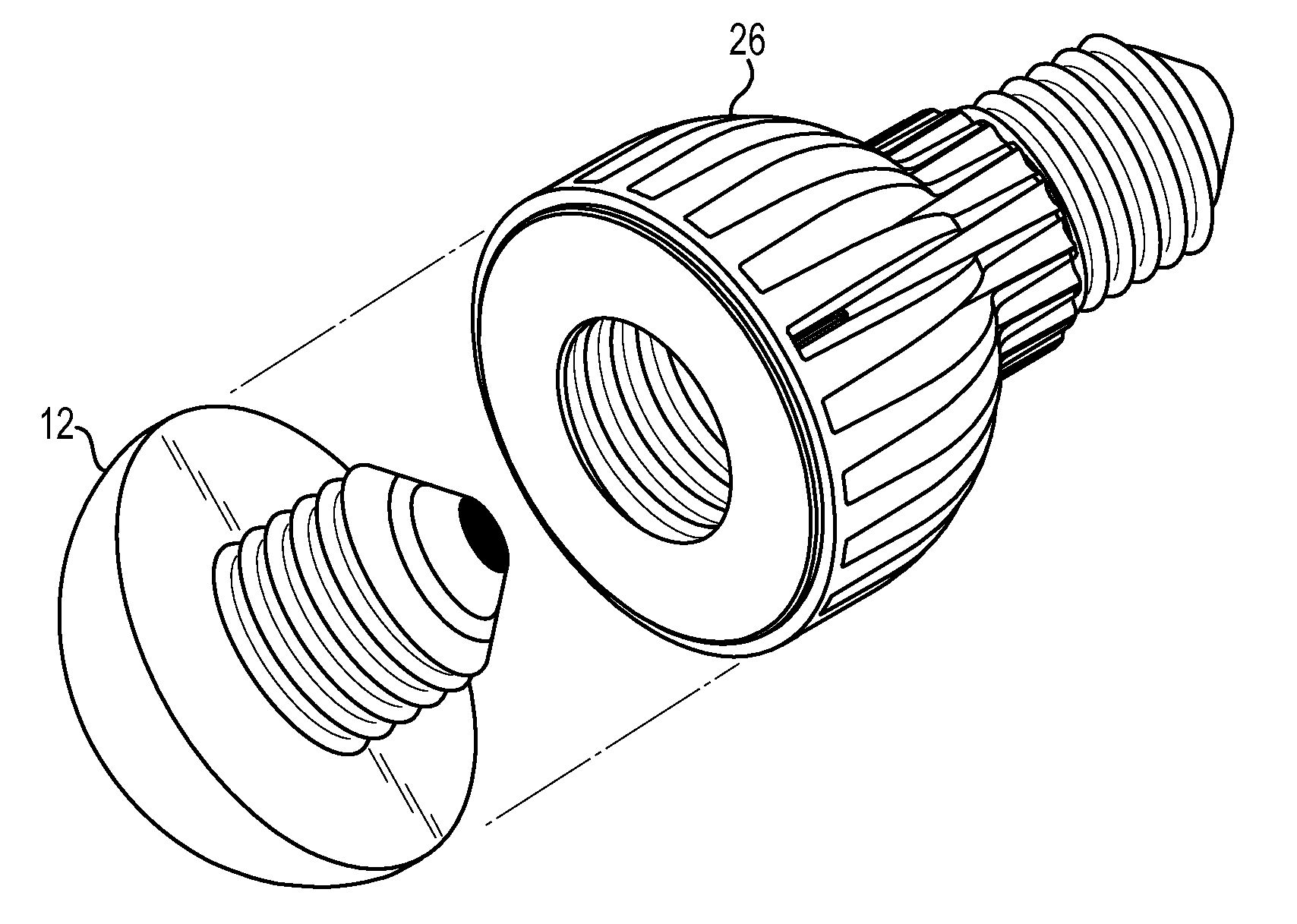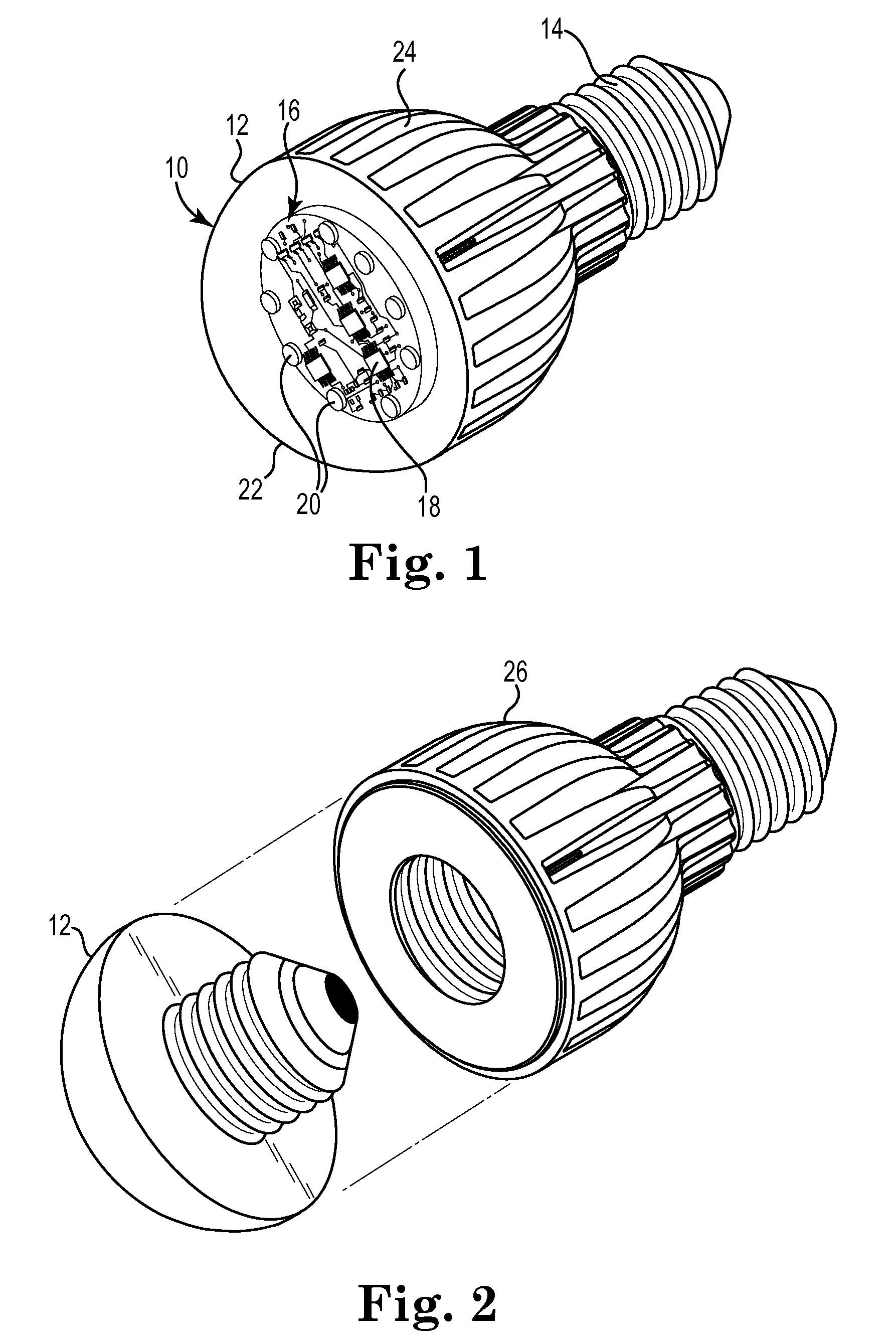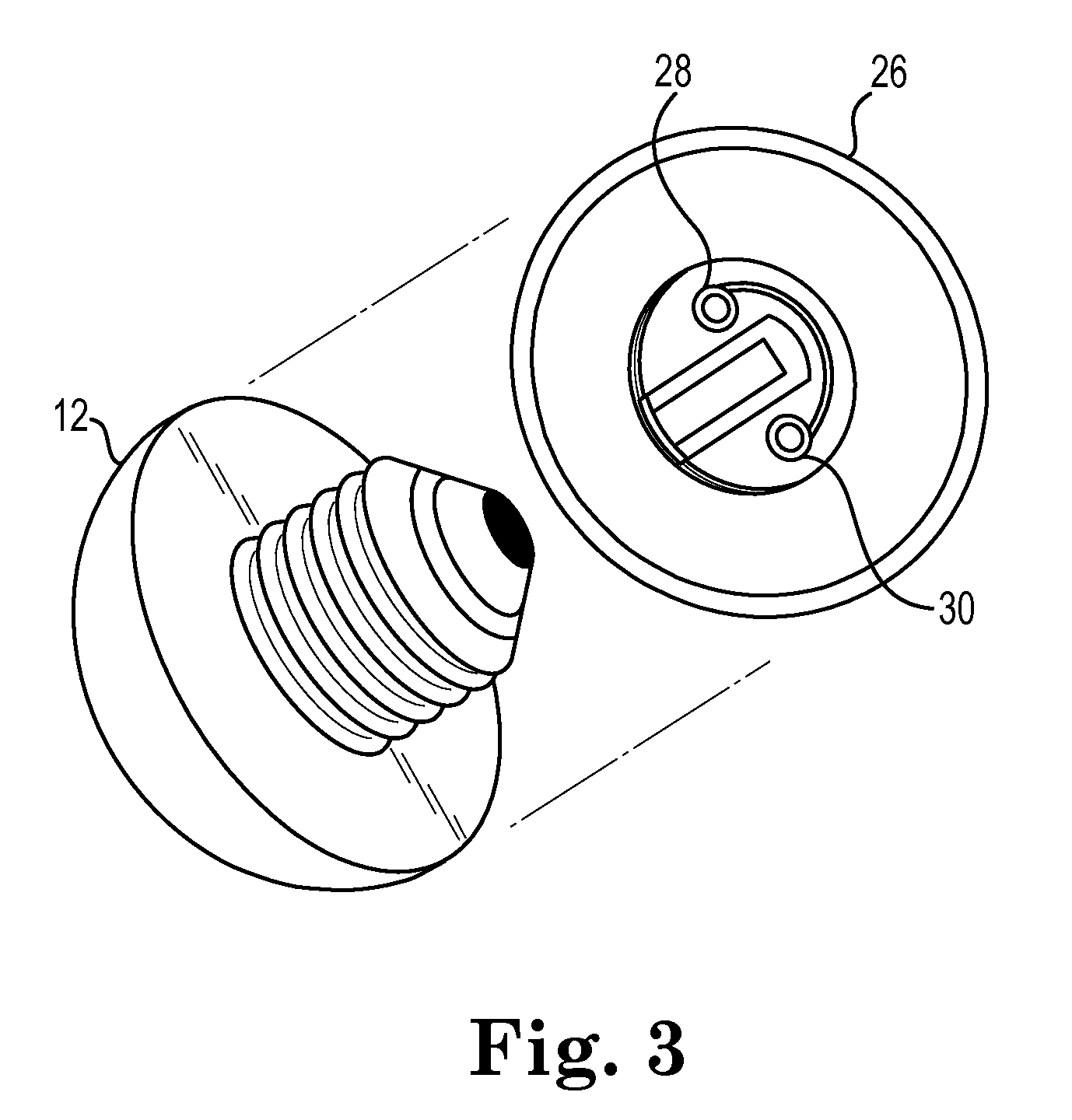Light emitting diode devices containing replaceable subassemblies
a technology of light emitting diodes and subassemblies, which is applied in the direction of cathode-ray/electron beam tube circuit elements, lighting and heating apparatus, etc., can solve the problems of heat adding to the cooling load of a system, incandescent light bulbs are very energy-efficient light sources, and the cost per btu of light emitting heat is typically more expensive than the cost per btu of the main heat sour
- Summary
- Abstract
- Description
- Claims
- Application Information
AI Technical Summary
Benefits of technology
Problems solved by technology
Method used
Image
Examples
Embodiment Construction
[0026]In general, the present invention is directed to lighting devices, and more particularly to white light LED-based lighting devices configured such that key subassemblies may be replaced, thereby enabling the modification and / or repair of said device.
[0027]One embodiment of a white light LED device 10 in accordance with the present invention is depicted schematically in FIG. 1. Incandescent light bulb devices with the shape and form factor depicted in FIG. 1 have generally been categorized by the American National Standards Institute (ANSI) as having part numbers R-20, R-30, R-38 and / or R-40, the difference being their height and diameter, increasing with higher numerical designation. Alternative incandescent devices have been designed with a similar, but not identical, shape and form factor incorporating a slight bulge in their base section and have been designated by ANSI with a “BR” prefix to highlight this feature. For example, the BR-20 incandescent light bulb has a simila...
PUM
 Login to View More
Login to View More Abstract
Description
Claims
Application Information
 Login to View More
Login to View More - R&D
- Intellectual Property
- Life Sciences
- Materials
- Tech Scout
- Unparalleled Data Quality
- Higher Quality Content
- 60% Fewer Hallucinations
Browse by: Latest US Patents, China's latest patents, Technical Efficacy Thesaurus, Application Domain, Technology Topic, Popular Technical Reports.
© 2025 PatSnap. All rights reserved.Legal|Privacy policy|Modern Slavery Act Transparency Statement|Sitemap|About US| Contact US: help@patsnap.com



